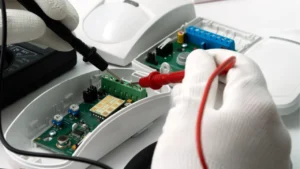In mining operations, where heavy machinery and vehicles navigate tight spaces and challenging terrains, collisions pose a significant safety risk.
These incidents can lead to injuries, downtime, and costly damages.
Fortunately, advancements in technology have provided innovative solutions to monitor and reduce collisions, making mining safer and more efficient.
In this blog, we’ll explore the role of technology in collision prevention and how mining operations can leverage these tools to improve safety and compliance.
The Challenges of Collision Management in Mining
Collisions in mining are often caused by:
- Limited Visibility: Operators of heavy equipment often have blind spots, increasing the risk of accidents.
- Congested Traffic: Mines often have high vehicle density, leading to increased chances of collisions.
- Human Error: Fatigue, distractions, and miscommunication can lead to mistakes.
- Dynamic Environments: Constantly changing conditions make navigation challenging.
Addressing these challenges requires more than traditional safety measures—it demands technology-driven solutions.
Key Technologies for Collision Monitoring and Prevention
Modern technology offers powerful tools to monitor and reduce collisions, including:
- Proximity Detection Systems (PDS)
- Use sensors to detect nearby objects and vehicles.
- Provide alerts to operators about potential hazards in real-time.
- GPS and Tracking Systems
- Monitor the location and movement of vehicles and machinery.
- Help operators avoid high-risk zones and congested areas.
- IoT-Enabled Cameras
- Offer real-time visibility of operations, helping operators identify potential risks.
- Record incidents for post-accident analysis and training.
- Collision Avoidance Software
- Use AI to predict and prevent collisions based on data patterns.
- Automatically adjust equipment operations to avoid accidents.
- Automated Traffic Control Systems
- Regulate traffic flow using signals, barriers, and alarms.
- Coordinate vehicle movements to prevent congestion.
Benefits of Using Technology to Prevent Collisions
Integrating these technologies into mining operations provides significant advantages:
- Enhanced Safety: Real-time alerts and automated responses reduce the risk of accidents.
- Operational Efficiency: Fewer collisions mean less downtime and smoother workflows.
- Cost Savings: Avoiding collisions reduces repair costs and medical expenses.
- Compliance Assurance: Meets safety standards set by the Department of Mineral Resources and Energy (DMRE).
Best Practices for Technology Integration
To maximize the benefits of collision prevention technology, mining companies should:
- Conduct Risk Assessments: Identify areas where collisions are most likely to occur.
- Invest in Scalable Solutions: Choose technologies that can grow with your operation.
- Provide Training: Ensure operators and workers understand how to use these systems.
- Regularly Update Technology: Keep systems up-to-date to address emerging risks and challenges.
How VTI Helps Minimize Collisions
At VTI, we specialize in providing state-of-the-art collision prevention solutions tailored to the unique needs of mining operations. Our services include:
- Proximity detection systems with real-time alerts.
- AI-driven collision avoidance software.
- Customized traffic control systems for safe and efficient operations.
- Consulting services to design and implement comprehensive safety strategies.
Conclusion
Collisions in mining operations are preventable with the right technology.
By investing in advanced monitoring and prevention systems, mining companies can protect their workforce, reduce operational risks, and ensure compliance with safety regulations.
Take the first step toward safer mining operations. Contact VTI today to learn more about our collision prevention technologies and how they can transform your safety practices.


